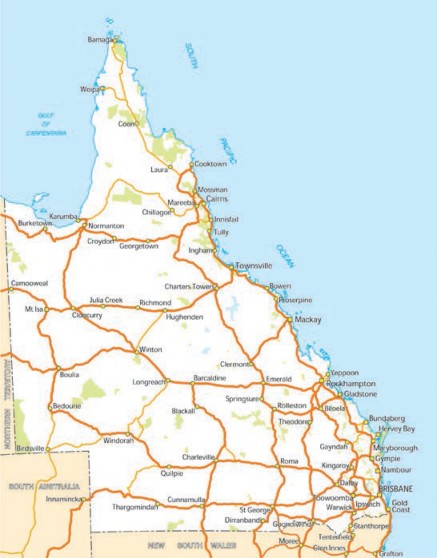Ayr research facility
Site Details
| Research facility name | Ayr Research Facility |
|---|---|
| Research facility address | 343 Old Clare Road, Ayr QLD 4807 |
| Telephone | +61 7 4763 0700 |
| Coordinates (GPS at office) | 19°37'01''S, 147°22'44''E |
| Climate | The climate is a subhumid, tropical climate, with 80% of rainfall falling in the in the warmer half of the year and a high degree of rainfall variability. Average annual rainfall 950mm. Temperature 23-32°C (January) and 12-25°C (June). |
| Topography | Generally level and easy undulating alluvial forest, all cleared, with ¾ developed for agricultural research use. Intersected by watercourse. Within a developed farming (cane growing) district. |
Site overview
Ayr Research Facility is located close to the township of Ayr in the heart of the rich Burdekin Delta and has a dry tropics climate. The 42.7 hectares (ha) of flat Burdekin Delta rich farming soils are cleared with established windbreaks and serviced with reliable, plentiful irrigation water available from three bores. The climate enables an extensive range of cropping from temperate to tropical.
Ayr Research Facility was originally developed by the Commonwealth Department of Commerce and Agriculture to produce fresh vegetables for the armed services during World War II.
In 1948 the Queensland Department of Agriculture and Stock resumed the areas to provide facilities for agricultural and pastoral studies. During the 1950s research into crops such as cotton, maize, sorghum, sunflower, potato, linseed, wheat, oats, jute, castor beans, peanuts, tobacco, lucerne, barley, soybean and pasture legumes for cattle fattening were conducted. Horticultural crops, which included pineapples, bananas, tomatoes, French beans and passionfruit were also grown.
The first dairy cattle were introduced to the station in 1962. An eight stall dairy was built in 1964. The last of the dairy cattle were transferred from the station in 1982.
The facility is currently involved in sorghum breeding, mungbean breeding, mahogany selection and other horticultural trials as requested.
Facilities
General facilities
The site has built facilities including an administration office, additional accommodation for 17 staff, a standalone 40-seat conference room and a small meeting room. General storage, machinery sheds, purpose built mechanical workshop, headhouse, shade house, glass house and chemical store.
The site has a wide range of plant and equipment including tractors, sprayers and cultivators required to support research and grow a broad range of crops.
Unique features
Ayr Research Facility offers opportunities for a range of activities unable to be replicated elsewhere. These unique features include:
- Located in the Dry Tropics Zone, which represents most of northern Australia
- Climate allows winter trials of temperate summer crops
- Located in the centre of a major horticultural area
- Security of tenure for long term activities
- Reliable supply of good quality water making the property drought proof
- Predictable climate that enhances the reliability of field trials reaching completion
- The site allows for out of season R&D activities during winter for both Southern Queensland and Southern Australian collaborators
- Sufficient land area allows best practices of crop rotation, spelling land and conducting some commercial activities
- Close access to road, rail, air and sea transport systems.
Specialised infrastructure
Controlled environments
- Glasshouse: 120m2 with temperature and humidity controls. There are various sized pots and tubs stored in the adjacent headhouse to suit trial layout and project requirements.
- Screenhouse: 160m2 of green shadecloth. There are various sized benches, pots and tubs stored in the adjacent headhouse to suit trial layout and project requirements.
- Cold rooms: 32m2 floor space with shelving, temperature and humidity controls.
Laboratories, processing facilities and conference room
- Laboratories: The facility has three laboratories, a pathology laboratory, an agronomy laboratory, and a dirty laboratory housed in the hay shed adjacent to field trial areas at the back of the station. Plant and equipment includes: autoclave, fume hood, sample grinder, single head thresher and a sample drying oven.
- Seed store: The seed store is temperature and humidity controlled.
- Conference rooms: standalone self-contained conference room that seats 40 classroom style or 100 theatre style. A small meeting room, that seats 12, is located in the administration building
Irrigation
- Pumping and irrigation: The facility is watered by three bores situated on an underground aquifer. Three irrigation pumps provide a range of pressure and capacity options for irrigation. Water is reticulated around the facility by a system of permanent irrigation mains. The facility is divided into three dedicated irrigation areas which can be isolated from each other, however, all pumps can service all parts of the facility if required.
Blocks can be irrigated using trickle tape or through flood irrigation in pre-constructed furrows. Water is filtered through in line filters to ensure operation without blockages.
Specialised plant and equipment
Precision planters and plot harvesters
- Plot harvester: KEW SPH-93 plot harvester on site for basic harvesting requirements.
- Planters: plot planter available to plant a wide range of crops in various plot lengths and trial designs. Air seeder available for a range of broadacre crops.
Pest and pathogen control
- Sprayers: machines include various row and nozzle configurations, tank sizes, and air assisted booms. Dedicated sprayers for herbicide and pesticide use. Shielded sprayer for inter-row weed control.
Sample processing
- Wesberg sample drying oven
- Apex sample grinder
- KEW single head thresher
Research focus
Experimental and contract research in field crops, tree crops and horticulture.
The facility assists research, development and extension through the delivery of integrated pest and disease management.
Specific focus includes:
- Plant protection (entomology and pathology)
- Technology delivery to the horticultural, cropping and beef industries
- Plant breeding in sorghum, maize, mungbean and soybean
- Commercial research is also undertaken on sorghum, maize and rice
- Research on pest management in fruit and vegetable production
- Risk management (biosecurity and plant pests)

